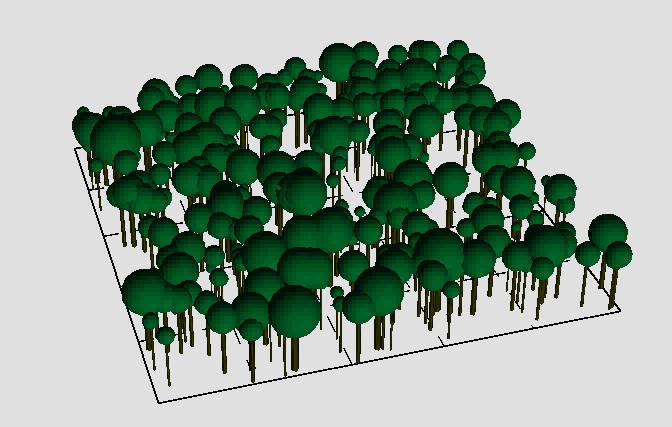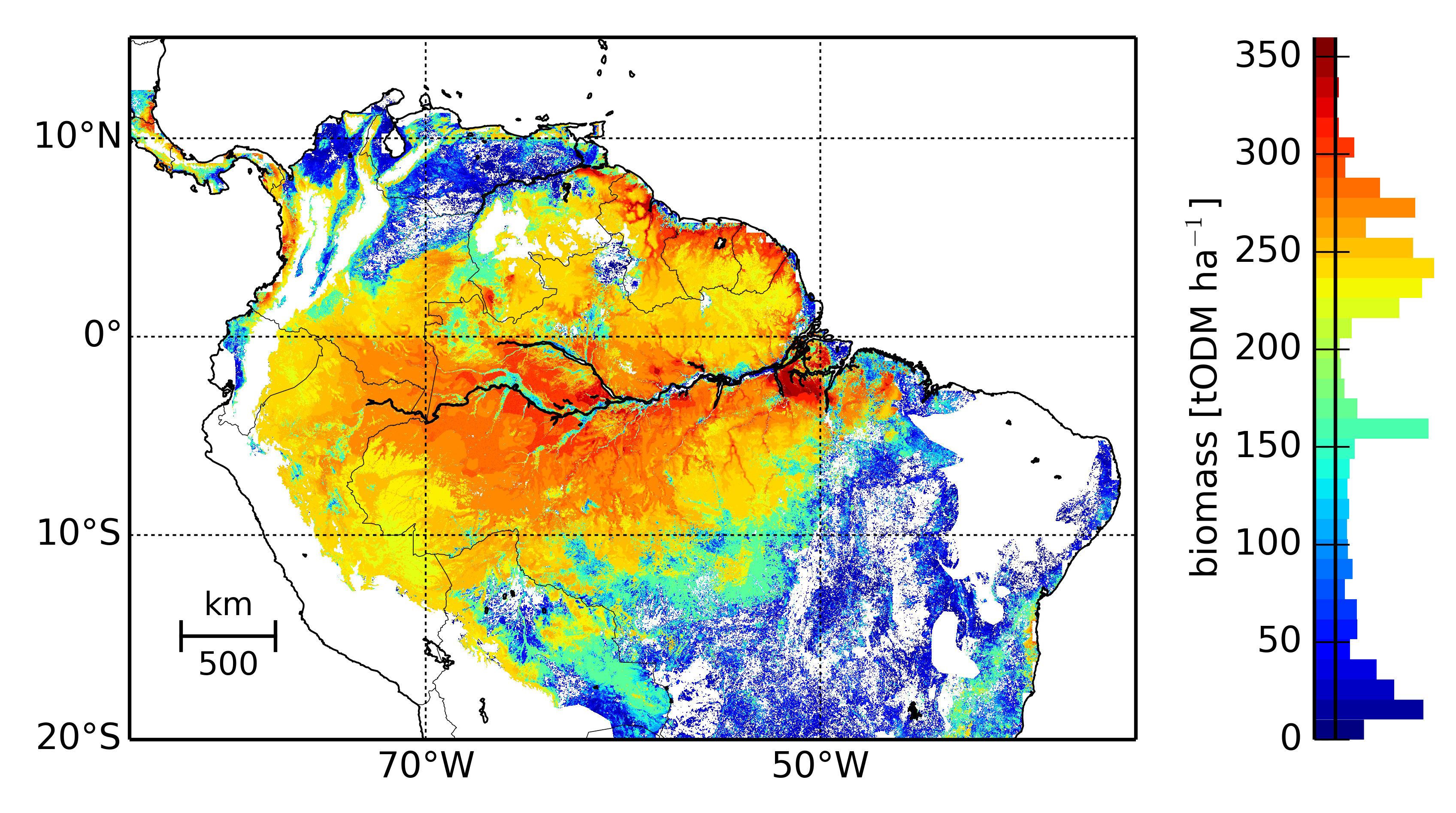FORMIND
Modeling the carbon fluxes of a spruce forest with a forest gap model
Biomass estimates of the Amazon rainforest
Modeling the carbon fluxes of a spruce forest with a forest gap model
 Forests are important sources or sinks of atmospheric CO2. While carbon flux data from eddy covariance are commonly available in half-hourly time steps, forest gap models describe the exchange of carbon with the atmosphere on much larger time scales such as years in order to display slow succession processes.
Forests are important sources or sinks of atmospheric CO2. While carbon flux data from eddy covariance are commonly available in half-hourly time steps, forest gap models describe the exchange of carbon with the atmosphere on much larger time scales such as years in order to display slow succession processes.
Modeling the carbon fluxes for the spruce forest Wetzstein, Germany, is a first step within an integrated project between the Department Computational Hydrosystems and the
Department of Ecological Modelling
. The aim of the project is to include fast measured processes of the ecosystem into the spatially-explicit, individual-based forest model
FORMIND
.
The spruce forest at the Wetzstein is a monoculture and therefore serves as a simple testcase for FORMIND. While establishment and mortality of individuals are calculated on a typical time scale of one year, fluxes of water, energy and carbon are calculated on an hourly to daily scale. Inventory data allows the initialization of the model. Precipitation and radiation data of the eddy-flux measurements are used as driving variables of the model. The measured fluxes will be used for a detailed calibration of the model. Once FORMIND was applied on the testcase Wetzstein, the model will be adopted to the complex environment of the Amazon, which has the largest carbon turnover globally.
Contact: Edna Rödig
Biomass estimates of the Amazon rainforest
 Preliminary biomass map of the Amazon rainforest simulated with the regionalized, individualbased forest gap model FORMIND.
Tropical forests are characterized by their high biodiversity and successional dynamics caused by natural disturbances. These can be captured well on small spatial scales with individual-based forest models. Often important information on forest structures get lost when processes are upscaled to larger regionas such as the whole Amazon rainforest. We regionalize an individual-based forest gap model without losing such important structural information and can thereby estimate spatial differences of biomass across the Amazon tropical forest.
Preliminary biomass map of the Amazon rainforest simulated with the regionalized, individualbased forest gap model FORMIND.
Tropical forests are characterized by their high biodiversity and successional dynamics caused by natural disturbances. These can be captured well on small spatial scales with individual-based forest models. Often important information on forest structures get lost when processes are upscaled to larger regionas such as the whole Amazon rainforest. We regionalize an individual-based forest gap model without losing such important structural information and can thereby estimate spatial differences of biomass across the Amazon tropical forest.
We adapted the individual-based forest gap model FORMIND to several tropical forest sites in central Amazon in order to reproduce productivity, forest structure and biomass of different successional stages. We spatially adapted the mortality parameters of early, mid and late successional trees to replicate data from field studies spread over the entire Amazonian rainforest: specific wood density and above-ground biomass. This resulted in the regionalized forest model FORMINDalized. The results of the regionalized forest model were related to remote sensing data. This enables to analyze productivity of the Amazonian at different successional stages.
Contact: Edna Rödig
